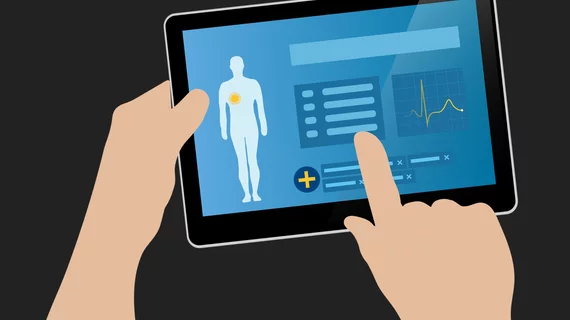EHR interventions increase lung cancer screening by 30% but still leave over half of patients behind
Electronic health record-enabled interventions can improve lung cancer screening compliance by over 30%. And while this might represent a significant dent in noncompliance, there is still much work to be done, according to new data published in JAMA Network Open.
Although low dose computed tomography (LDCT) scans that screen for lung cancer are known to improve detection rates and health outcomes, compliance among eligible patients remains lackluster. As such, many have pushed for improved methods of recruiting eligible patients.
In this most recent study, experts utilized a multifaceted approach to increase compliance, including multiple EHR interventions targeting both physicians and patients.
The first part of the two-phase approach provided clinician-facing reminders to discuss LDCT screening. One of those reminders was integrated into the EHR’s ordering module, where providers put in imaging requests for patients. That reminder incorporated narrative guidance on LCS guidelines, including requirements from the Centers for Medicare and Medicaid Services (CMS), to serve as a decision-making aid regarding patients’ eligibility for screening.
In addition to the physician-facing reminders, the second part of the intervention included notifications focused on patients themselves. Those reminders were in the EHR system’s health maintenance module and were presented to patients on the main portal screen; they could also be accessed through the main menu of the patient portal. Patients received notification reminders on the need for lung cancer screening and prompts to initiate discussions on the subject with their providers.
Nearly 2,000 patient encounters were included during the intervention periods. Experts first analyzed how the physician-facing interventions affected care gaps and noted positive benefits, though they were not robust. However, after entering the second phase of the study, when patient-facing reminders were integrated on top of the physician-focused ones, the team immediately observed more substantial improvements.
By the end of their assessment, the care gap closure rate had risen from 15.9% at the end of the baseline period to 46.9% by the end of the second phase. While the figures represent an improvement, the interventions did not result in an LDCT order or discussion for 43.6% of patients.
“This study identified several areas of need for further research and improvement. As identified by us and others previously and as underscored by the large number of patients with unknown LCS eligibility in this study, there is a need to improve the documentation of detailed smoking history in the EHR,” corresponding author Kensaku Kawamoto, MD, PhD, from the department of biomedical informatics at the University of Utah, and co-authors note. “Moreover, 8.5% of patients in this study had an LDCT ordered in the past year but did not complete it, indicating the need for improving follow-through after LDCT ordering.”
Given the increased compliance observed following the patient-facing intervention, the group suggests focusing on improving patient education. Making it more accessible and engaging, they argue, could be an avenue that warrants further exploration.
Learn more about the interventions here.

